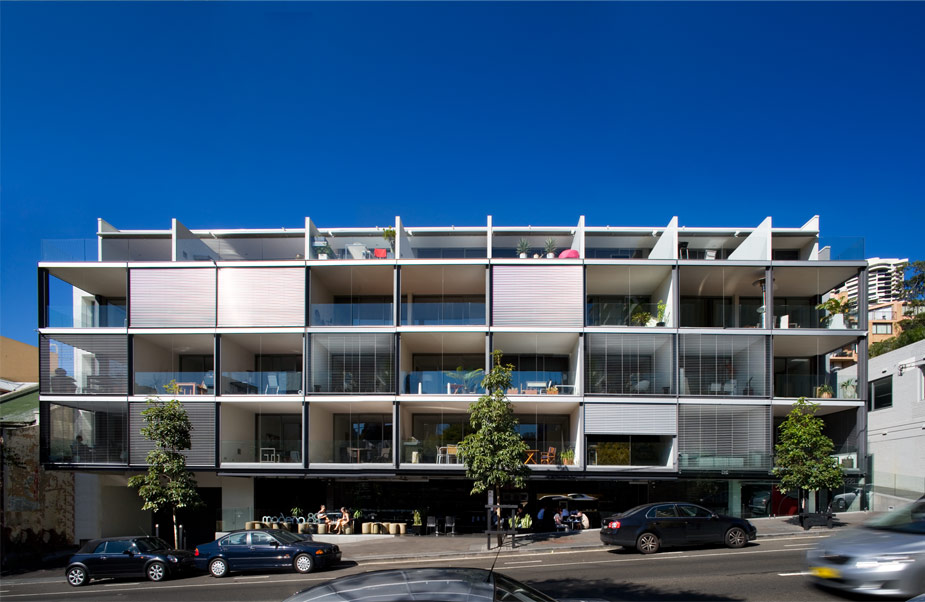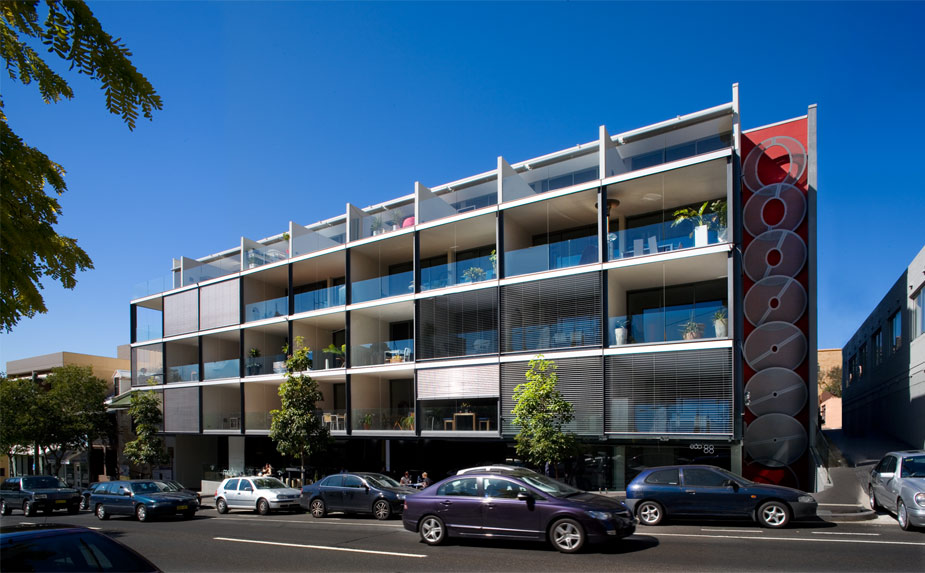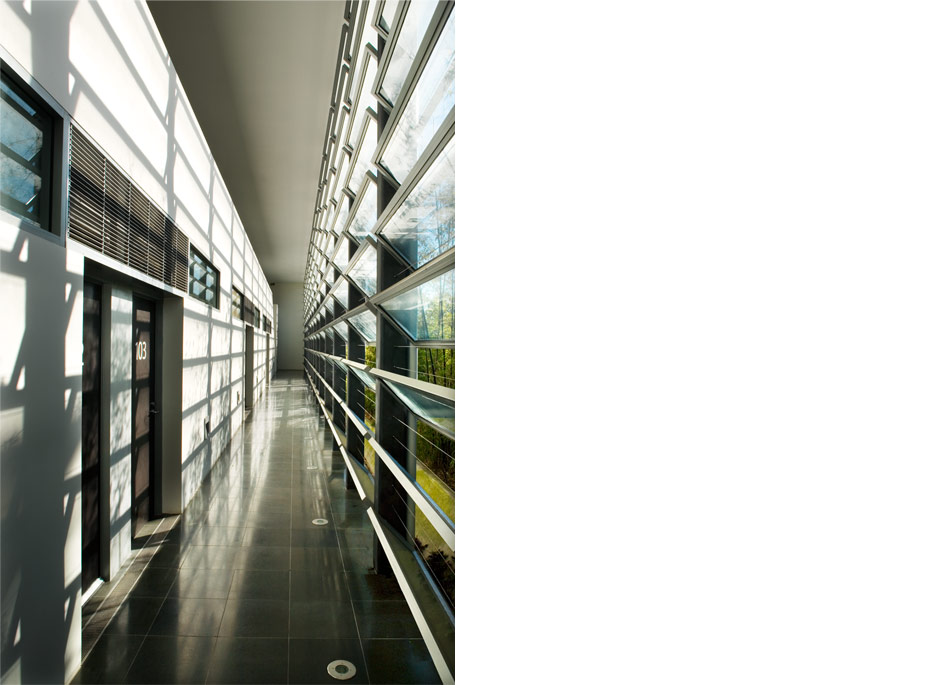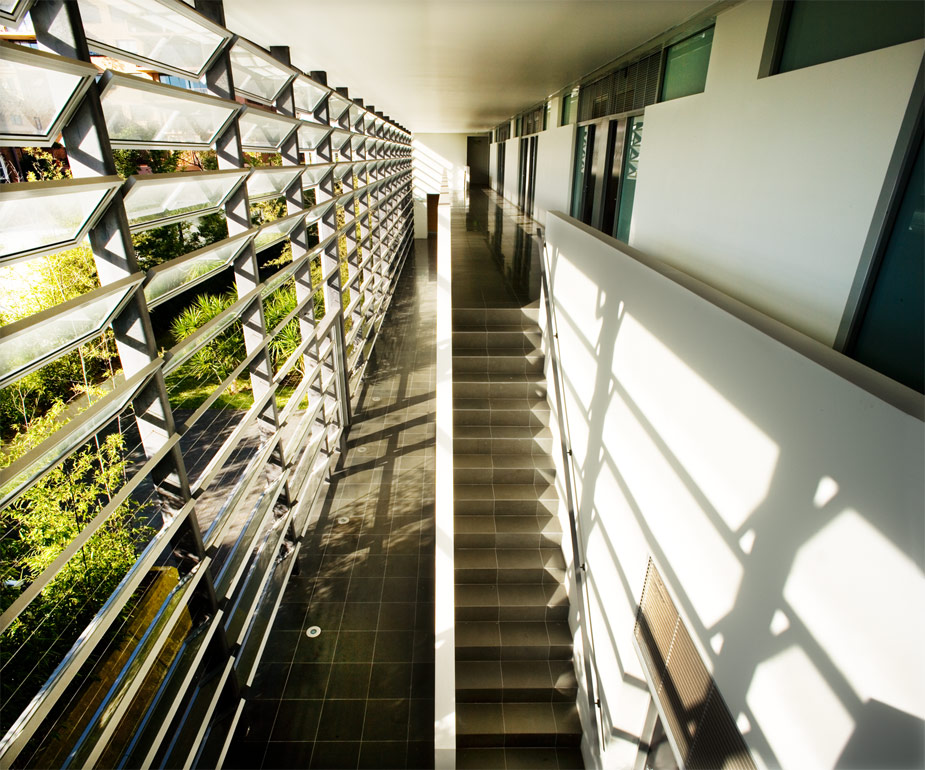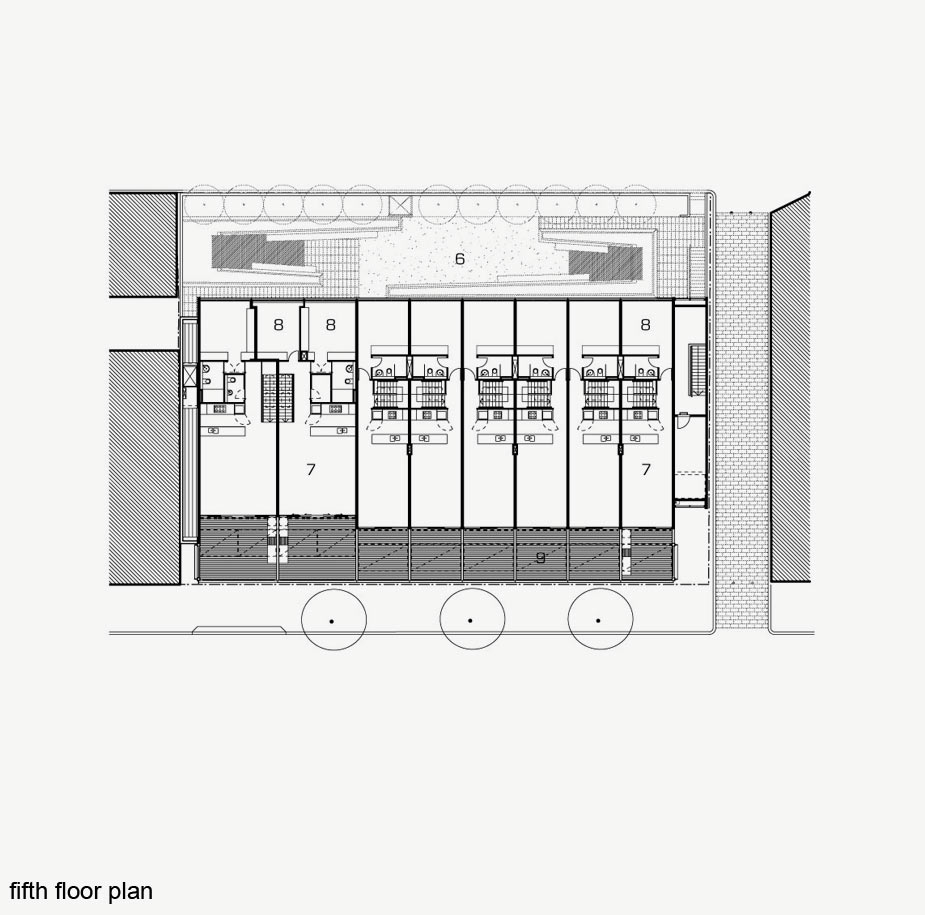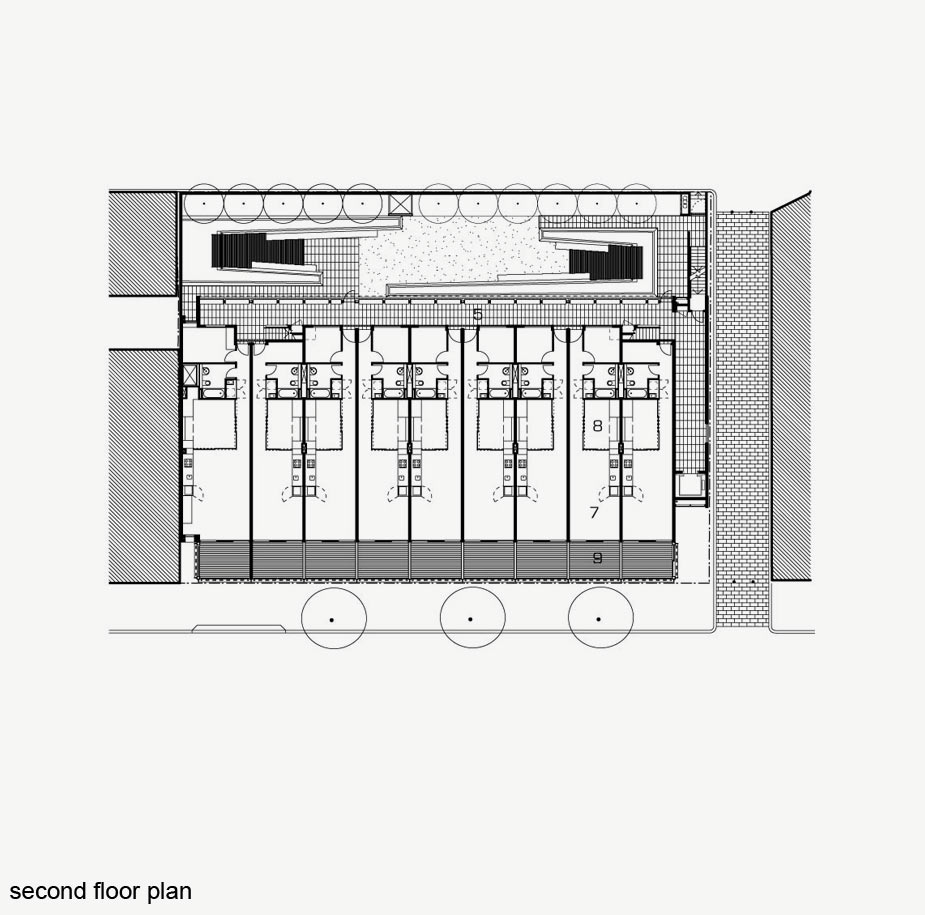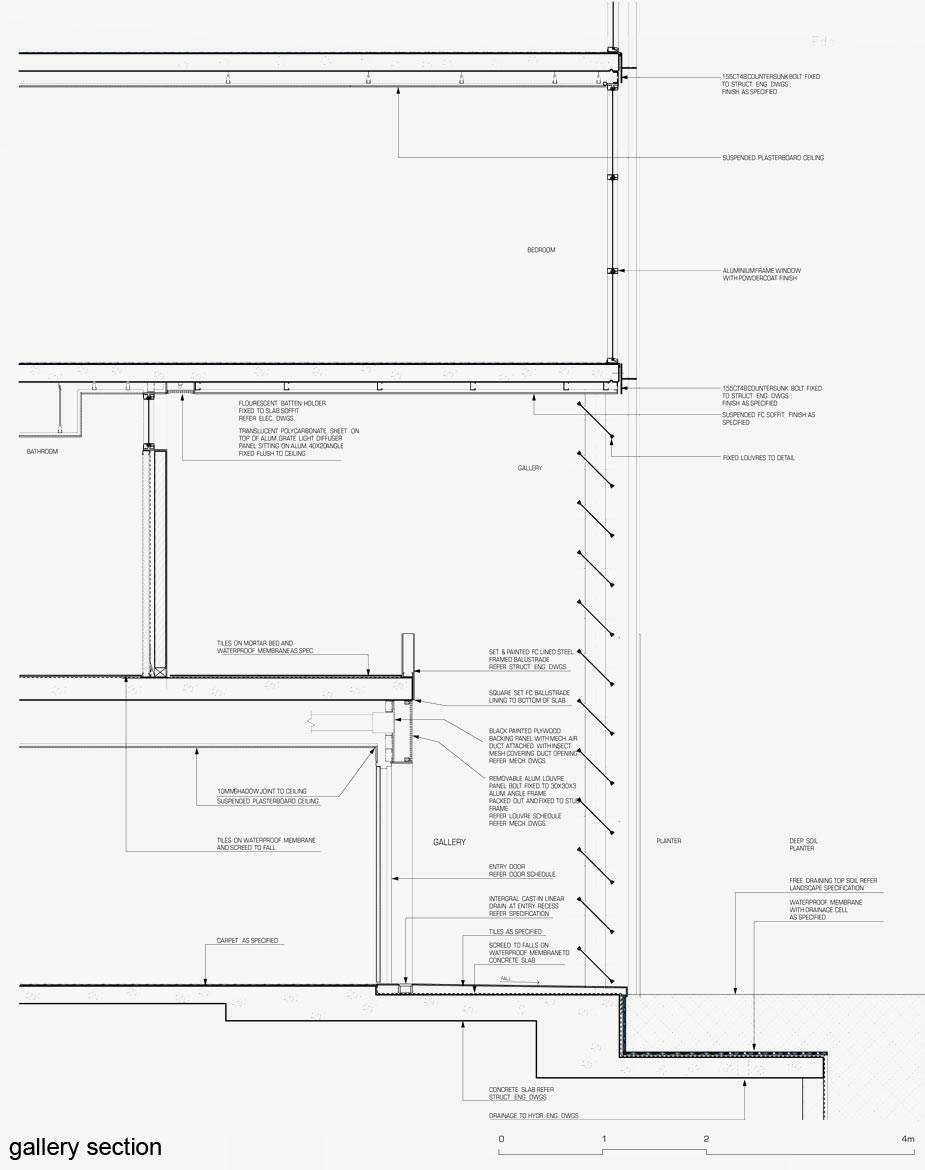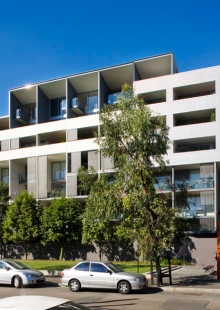Edo
EDO is an acronym for environment, diversity and operability – the three guiding design principles of this mixed-use apartment building. Environment refers to passive environmental design such as cross-flow ventilation, rainwater detention and sun-shading. Diversity relates to the variety of apartment layouts that comprise one, two and three beds with and without studies, on single and two levels, and in gallery and cross-over arrangements. The ground level of the building contains a restaurant that opens to a street terrace. Operability refers to the ease with which occupants can modify their space through sliding doors and external blinds depending on the time of the day, mood or weather conditions.
EDO is located in a typical inner Sydney street with a west facing elevation that is cooked by the harsh afternoon sun, yet offers spectacular night views over parkland to the city skyline and lights. It is adjacent to automotive showrooms, Victorian terraces, mediocre residential flat buildings and the high-rise, Boulevard Hotel.
The architectural concept for EDO is an abstract floating box which contains living and breathing spaces filled with light, air and space. EDO’s design focuses on creating an abstract framework for living. The apartments feature slide away walls, remote controlled blinds and oversized balconies that extend space and give occupants flexibility. EDO is a climatically responsive building that applies environmental design to the discipline of modern technology and aesthetics. It is particular to Sydney, forming a regional response to modern architecture.
The project contains 31 apartments and a street level restaurant and is a prototype for compact urban living environment. The reductive and restrained exterior masks the richness and complexity of the interior. On the western face, EDO has a gridded steel frame filled with frameless glass balustrades, silver-grey aluminium window frames and retractable aluminium louvre blinds giving the building a random, ever-changing appearance as occupants adjust the louvres to close them to create intimacy or open them to let in light, air and views to the city skyline. Residents can close the blinds in the late afternoon to shade the harsh low-level western sun and then open them to enjoy the city lights. The blinds retract automatically when the wind reaches high velocity.
One of the building’s most notable elements is on the eastern courtyard side: a two storey gallery that provides access to the lower two levels of apartments, framed by custom designed, fixed glass louvres. In the morning in winter the gallery is a sun trap, and in summer the gallery is a pool of filtered light, due to the bamboo that screens and small, lush, Eastern-influenced courtyard. The gallery has no artificial lighting (apart from safety lights) and at night it is illuminated by the street and the sky. The eastern courtyard is a place of solitude and calm.
The entry to the building, adjacent to the renewed Badham Lane, is marked by a ‘ring’ sculpture by public artist Peter McGregor that deconstructs the word Woolloomooloo to connect the building to the history of its place. The sculpture wittily uses a series of “O”s to evoke the name of the suburb Woolloomooloo - the consonants are arrayed on the floor. The sculpture is made from steel rings and perforated steel panels, echoing the building’s external steel frame.
Data
Type: Live / Hybrid
Location: 88 Crown Street, Woolloomooloo, Sydney, Australia
Status: Completed
Year: 2007
Client: Buildcorp
Number storeys: 5
Site area: 1,193 sqm
Floor area: 2,615 sqm
Collaborators: Aspect Studios Landscape Architects, Peter McGregor Public Artist, SCP Structural Engineers
Photography: Patrick Bingham-Hall
AIA ,Aaron Bolot Award, Multiple Housing, 2008
BPN Environ, Sustainability Award, Low Density Housing. 2007
RAIA, Architecture Award, Residential, Finalist, 2007
